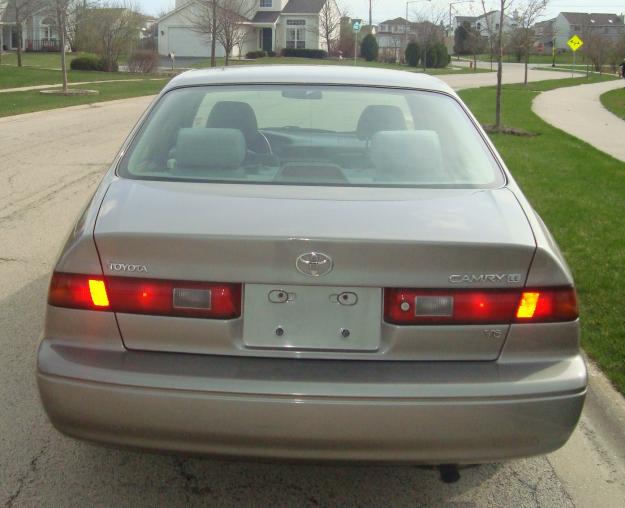QOTD: Four On Six? (Or Boost?)
Once upon a time, there was the Accord. It had sixty-eight horsepower from 1.6 liters of four-cylinder power. And the consumer saw that it was good, and the Additional Dealer Profit stickers spread far and wide across the land. The Eye Of Toyota, concealed within the fortress of Toyota City, saw the Accord and commanded the Camry to be built. It was bigger and more powerful, but it was also powered by four cylinders.
The General Motors X-Body and A-Body, to say nothing of the Ford Tempo and Mercury Topaz, could be had with a V-6, but it mattered not, for not a single Accord buyer in history ever decided upon a Cutlass Ciera as an alternative. But then, one day, Toyota raised the stakes.
And thus the pattern of the marketplace was fixed. In the world of mid-sized sedans, you must offer a four and a six. The six is there to anchor the top of your lineup, to provide a near-luxury experience for buyers who are downgrading from the Europeans, to benefit from the pre-existing synergies with the Lexus or Acura variant of your mid-sizer which has to have a six. The four is there for customers to actually purchase in measurable volume. Over the past two decades, the 80/20 rule has held generally true, with the four gaining a little more ground, perhaps to 90/10, as fuel prices increase and real-world purchasing power drops.
All was well until the Koreans decided to throw salt in the game with the turbo-four Optima and Sonata. General Motors promptly followed them over the cliff with the Malibu Turbo. Ford decided to provide two turbo engines for the Fusion, one of them the same displacement, more or less, as that original 1977 Accord but making two and a half times the power.
This is the most choice we’ve had in the midsizer market since… well, since ever, really. It’s a shame nobody’s offering a wacky-weed eight-cylinder anymore (pour one out for the Taurus SHO, the Impala SS, and the Passat W8) but right now you can get anything from a force-fed 1.6L to a silky-smooth 3.5L V-6. What would you pick? What’s the best mix of fuel economy and power? Will the turbo four kill the V-6, and if so, why don’t the Japanese know this?
More by Zombie McQuestionbot
Latest Car Reviews
Read moreLatest Product Reviews
Read moreRecent Comments
- MaintenanceCosts If you want a car in this category, you want interior space, comfort, predictability, and low running costs.That probably favors the RAV4 Hybrid, with second place going to the CR-V hybrid. The CR-V is a nicer-looking and nicer-feeling product, but it just has not proved quite as low-drama as the Toyota.The RAV4 Prime is a compelling car but it's extremely expensive and still hard to get, and the regular hybrids are a better value.There's no reason to choose the non-hybrid of either one. You get higher running costs and less refinement for no benefit.
- Aaron Id lean towards the rav4. The crv1.5 turbo has had issues. The rav 4 has both port and direct injection, no cvt. Also the Toyota hybrid systems have been super stout
- Jeff My wife owned a 2013 AWD CRV since new it has been trouble free but I am not a fan of turbos so I would lean toward the Rav 4. If I were getting a hybrid it definitely would be a Rav 4 with Toyota's hybrid system being the best. Honestly you could not go wrong with either a CRV or a Rav 4. My third choice would be a Mazda.
- 3-On-The-Tree We like our 2021 Rav4 non hybrid.
- Vatchy FSD never has been so what is with the hype about robo-taxis? You would need the first in order for the second to work.


































Comments
Join the conversation
90% of V6 Accords and Camrys are never used to their potential. I made the decision on a four cylinder Accord. Going from a green light, I'm five car lengths ahead of every other car on the road. Every. Single. Time. I prefer economy in my beigemobile, saving the money for a big engine in my 2nd 'fun' car.
Father in law bought a Camry V6 XLE new in 97, never used it for anything useful that a 4 couldn't do, he just bought it because it is "top of the line" and it is "almost a Lexus" on paper. Fast forward to 2014, the car is much more expensive to maintain due to the V6's extra work on spark plug, belts, and harder to replace leaky gasket, and most importantly HORRIBLE FUEL ECONOMY. The same happen to my dad who bought a 2001 Ford Taurus Vulcan in 2002 for $11k I'll never buy a V6 ever in my life if 4 is available on the same car. I'd even pay more to get a 4 cylinder instead of a 6.